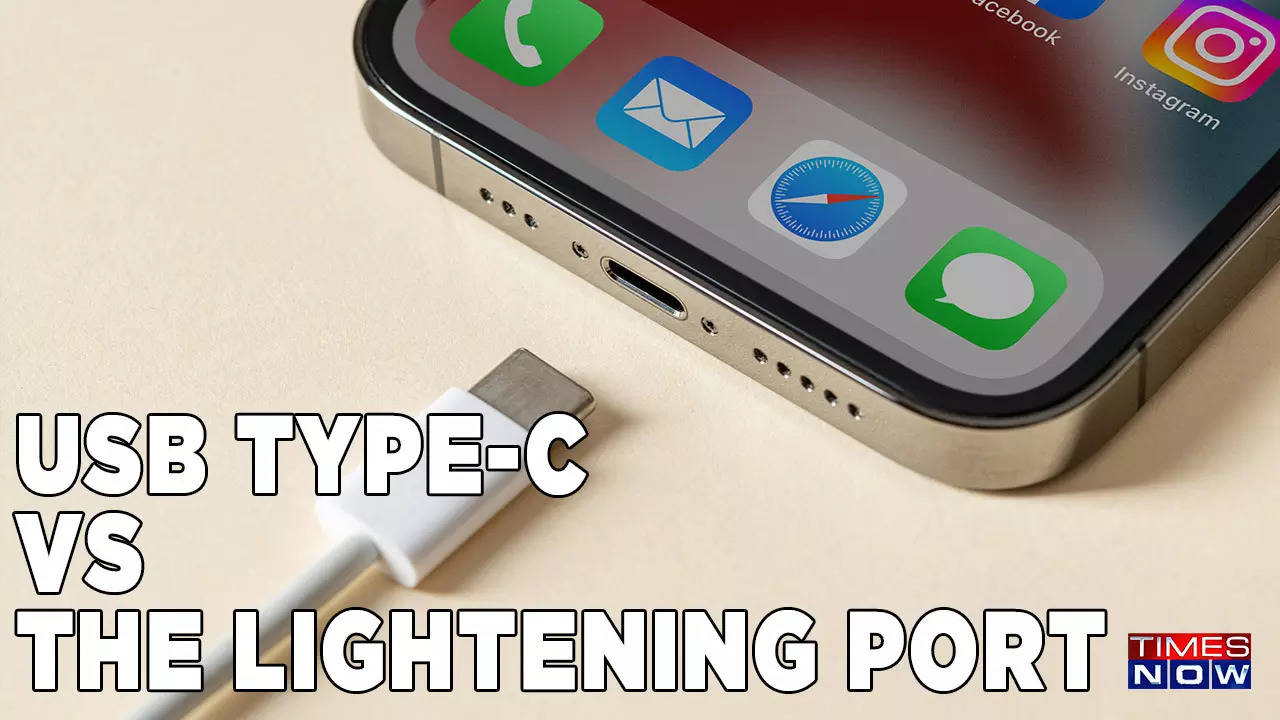Here is why a USB Type-C iPhone will be far superior to the one with Lightning port
Universal charging port laws or not, USB Type-C brings a lot more to the table than lightning port

Charging ports of smartphones are not just charging ports, they fulfill connection, communication, and power supply needs. However, manufacturers like to bring their own proprietary charging port to force users to purchase their accessories and increase revenue.
Apple's Lightning port is one such solution. Launched two years before USB Type-C in 2012, the Lightning port replaced the 30-pin dock connector which was last seen in iPhone 4. From iPhone 5 to iPhone 14, everything has changed, however, the Lightning port remains as is. Being a proprietary connector and used in most of Apple's ecosystem of devices, Apple earns a lot of revenue from 3rd party manufacturers.
While the Lightning port was pretty nice when it was launched with the ability to be reversible, 10 years down, its USB Type-C offers superior technology than the old Lightning port.
High-Speed Data
While the Lightning port was fast when it was launched, USB Type-C has outclassed the proprietary port in Data transfer speeds. USB Type-C is capable of supporting USB4 standards, which means it can offer data transfer speeds of up to 40Gbps, meanwhile, the Lightning port offers USB 2.0 speeds of 480Mbps.
Why is this important?
With ProRaw, ProRes, images, and video capabilities in iPhones, many people use their iPhones to create content. Large file sizes are a norm with these formats and transferring these large files to a computer for editing over a Lightning port will take ages.
Why is this irrelevant?
As wireless speeds improve with Wi-Fi 6, 6E and now even Wi-FI 7, wired data transfers are rare. Cloud storage and music streaming have literally made connecting to iTunes for backup and storage a rare thing. Moreover, If you are invested in the Apple Ecosystem, wireless file transfer using AirDrop is fast, easy, and reliable.
Power Delivery
While wireless data transfer speeds are increasing, wireless power delivery is still quite slow and most users rely on wired power delivery. This is one area where the Lightning port is lagging behind, Devices with blazing fast charging speeds are very real, as seen with the latest Android devices like the OnePlus 10T which offers 150W fast charging. This is because of the USB Type-C's native support for 100W/3A to 240W/5A power delivery, meanwhile Lightning port only supports 12W/2.4A natively. Fast charging is limited to 20W, and that too with a Lightning to USB Type-C cable.
Battery health and longevity queries aside USB Type-C is a couple of generations ahead in power delivery metrics alone.
Single Cable Solution
USB Type-C with its higher bandwidth, higher power support, and universal acceptance among devices provides a unique solution where one cable can support multiple devices. Apple understands this and the new iPad Pro models feature a single USB Type-C port, opening up a whole new world of possibilities with the iPad Pro. For everyone else, USB Type-C has been a godsend, from charging headphones, laptops, smartphones, keyboards, mice, and everything else. Thunderbolt 4 a hardware standard developed by Apple and Intel also uses USB Type-C, making it an easy way to connect your device to a large screen monitor, Apple Studio Display, or a projector and even charge the device at the same time.
All devices using a universal port leads to less cable clutter, and lesser cables to carry if you are traveling or always on the move. In case you forget to carry your charging cable, it will be easier to find a USB Type-C cable than a Lightning port cable.
iPhone 15
Some early rumors around iPhone 15 suggest the 2023 iPhone might finally feature a USB Type-C port, while some rumors suggest Apple could make the iPhone totally port-less with improved MagSafe wireless charging and AirDrop for data transfer. The European Union's decision to establish a single universal standard for charging ports surely spells the end for the lightning port.
Trending:
End of Article
Subscribe to our daily Newsletter!





Related News





ESA's Gaia Telescope Discovers Shakti And Shiva, Ancient Star Streams in Milky Way Galaxy

ICICI Bank Exposes Credit Card Data Of Over 17000 Users: What You Should Do Now

Garena Free Fire Redeem Codes April 26: Win Fantastic Prizes Now!

Explained: WhatsApp's End-to-End Encryption And Why It Is A Big Deal

WhatsApp To Exit From India? Here Are 5 Key Points You Should Know









